 In comics history there have been many characters that had vanquished many others, but Spidey polished off with ease: Firelord, X-Men, and the Juggernaut (O.K., maybe old Juggy wasn’t “with ease”, but you get the idea). That standard holds true when we look at Spidey’s foe in ASM # 96, 97, and 98. No, not the Green Goblin – a foe that took down not just comic book heroes, but entire comic book companies. I am, of course, talking about none other than that all powerful entity – The Code.
In comics history there have been many characters that had vanquished many others, but Spidey polished off with ease: Firelord, X-Men, and the Juggernaut (O.K., maybe old Juggy wasn’t “with ease”, but you get the idea). That standard holds true when we look at Spidey’s foe in ASM # 96, 97, and 98. No, not the Green Goblin – a foe that took down not just comic book heroes, but entire comic book companies. I am, of course, talking about none other than that all powerful entity – The Code.
You long time Spidey fans are well versed in the fact that Spider-Man “took on” the Comics Code on the famous drug story arc and are probably aware of what the code was and why we had one. So I’ll give a crash course for those that don’t and for those that do, my challenge will be to find something about this event that you don’t know (and for some of you readers out there, that is very challenging).
Strap on your seat belts and polish up those “Just Say No” buttons you had back in the 80s – we’re going way back to a crazy time when Spider-Man was still written by Stan Lee, Harry was a pill-popping addict, and the Green Goblin was in the running for Father of the Year.
Before anything about the Code can be discussed, we need to know why we needed a code to govern our comic books anyway. Obviously because they contribute to juvenile delinquency. Think about all those bad and evil things you’ve done your whole life – cheated in school, vandalized churches, killed friends then hid their bodies in remote wooded areas…. Why did you do them? COMICS! Don’t believe me? Just watch this promotional video that shows the destructive nature of comic books:
 This sort of stuff was so convincing that there was a senatorial investigation into juvenile delinquency in 1953. All of this was spearheaded by Dr. Fredric Wertham. He was a DOCTOR, so he can’t be wrong. Plus, he published a book – Seduction of the Innocent (a book which is unavailable as an online text so if you want it you better be prepared to pay anywhere from $40 to $750 for it). This tome of wisdom details all the correlation between comic books and juvenile delinquency, so he must be trustworthy. It is full of quotes like, “I think Hitler was a beginner compared to the comic book industry.” Comics lead to all sorts of bad things according to Wertham – truancy, homosexualism, and pedophilia to name some of the ones that he thought were the worst. If you are interested in what was so awful about these Golden Age books that required a psychologist and a congressional hearing, you can read several of the comics referenced in his book here (warning – Crawlspace is not responsible for any criminal and violent acts that you do as a result of reading these monstrosities of literature).
This sort of stuff was so convincing that there was a senatorial investigation into juvenile delinquency in 1953. All of this was spearheaded by Dr. Fredric Wertham. He was a DOCTOR, so he can’t be wrong. Plus, he published a book – Seduction of the Innocent (a book which is unavailable as an online text so if you want it you better be prepared to pay anywhere from $40 to $750 for it). This tome of wisdom details all the correlation between comic books and juvenile delinquency, so he must be trustworthy. It is full of quotes like, “I think Hitler was a beginner compared to the comic book industry.” Comics lead to all sorts of bad things according to Wertham – truancy, homosexualism, and pedophilia to name some of the ones that he thought were the worst. If you are interested in what was so awful about these Golden Age books that required a psychologist and a congressional hearing, you can read several of the comics referenced in his book here (warning – Crawlspace is not responsible for any criminal and violent acts that you do as a result of reading these monstrosities of literature).
Images like this from Batman and Robin comics were used as evidence, along with several others.
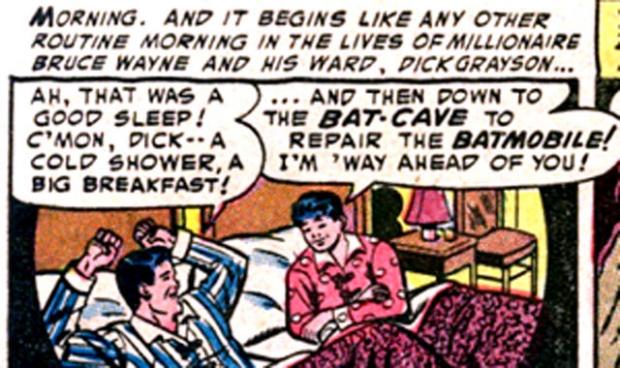
Stan Lee, of course, was not a big fan of this guy. Stan tells a story of one of several debates he had with the good doctor where Wertham said most kids in reform schools had read comic books. Stan retorted with the fact that most kids in reform school also drink milk, but we’re not trying to ban that. CBR casts doubt on any such interactions between Lee and Wertham, but I like Stan’s version, so that’s the one I’m going with.
Aaron Drucker suggests that J. Jonah Jameson was even modeled after Frederic Wertham, which is why JJJ tends to leap toward conclusions before getting all the facts.
Right or wrong, the companies producing comic books started to lose money fast. People who wrote and drew comics were looked on in the same manner as someone whose job was to hand out pornographic to little third graders coming out of a Catholic school. Many said that when asked what they did for a living, they would just make up something else. In order to try and salvage what was left of their industry, they created the Comics Code Authority, a panel led by comic book publishers to police themselves. This code pretty much closed down EC comics and they went into the magazine business with Mad Magazine. The entire original code can be found here.
 A book with the Code symbol on it could be relied upon to be safe for everyone to read.
A book with the Code symbol on it could be relied upon to be safe for everyone to read.
This code covers everything from weapon concealment to a woman’s posture. However, it doesn’t contain one single word about drugs. Never fear, the code has a catch-all clause:
“All elements or techniques not specifically mentioned herein, but which are contrary to the spirit and intent of the Code, and are considered to be violations of good taste and decency, shall be prohibited.”
This is what prevented any drug stories. Well, not all drug stories…
Y ou may have heard that this arc was the first since the institution of the code to tackle the drug problem. That’s not entirely true. There were others that did. Strange Adventures showed an opium deal going down, but no one using the drugs. Jim Shooter is probably the first to write a drug story where someone actually uses drugs in Action Comics #378 in 1969. This issue took place on the planet Oomar in some distant galaxy and involved that nefarious drug that has a stranglehold on the youth of the 60s – the fruit of the lotus plant (those of you who paid attention in school will remember this from The Odyssey – a gold star for you – the rest of you will remember it from Percy Jackson). Apparently some evil guy named the Doctor (but of course not THE Doctor) controls the addictive fruit and plans on getting all the Legionnaires hooked on it so that they will have to do his bidding. It almost worked if not for Light Lass. The original story had Timber Wolf suffer through the effects of withdrawal as he and Light Lass confronted the addiction. The code vetoed this story and he was made to change the story so that as soon as Timber Wolf remembered how much he loved Light Lass, the effects of the drug were broken, because you know, that’s the power of love. Shooter’s not the least bit bitter about being forced to rewrite his story for the code.
ou may have heard that this arc was the first since the institution of the code to tackle the drug problem. That’s not entirely true. There were others that did. Strange Adventures showed an opium deal going down, but no one using the drugs. Jim Shooter is probably the first to write a drug story where someone actually uses drugs in Action Comics #378 in 1969. This issue took place on the planet Oomar in some distant galaxy and involved that nefarious drug that has a stranglehold on the youth of the 60s – the fruit of the lotus plant (those of you who paid attention in school will remember this from The Odyssey – a gold star for you – the rest of you will remember it from Percy Jackson). Apparently some evil guy named the Doctor (but of course not THE Doctor) controls the addictive fruit and plans on getting all the Legionnaires hooked on it so that they will have to do his bidding. It almost worked if not for Light Lass. The original story had Timber Wolf suffer through the effects of withdrawal as he and Light Lass confronted the addiction. The code vetoed this story and he was made to change the story so that as soon as Timber Wolf remembered how much he loved Light Lass, the effects of the drug were broken, because you know, that’s the power of love. Shooter’s not the least bit bitter about being forced to rewrite his story for the code.
That brings up to 1971, when Stan Lee got an interesting letter from the U.S. Department of Health, Education, and Welfare asking him to use the influence of comics to combat the drug problem. Stan said in an interview that the letter should be in a scrapbook at a Marvel office, but to my knowledge, nobody has ever posted a copy of that letter online and Peter David didn’t stick it in the Vault book, so I’m inclined to think that this letter may be lost to history now. Stan Lee said he didn’t want it to be a preachy in-your-face sort of tale, so the drug sequences were made as a subplot in a story really about the Green Goblin.
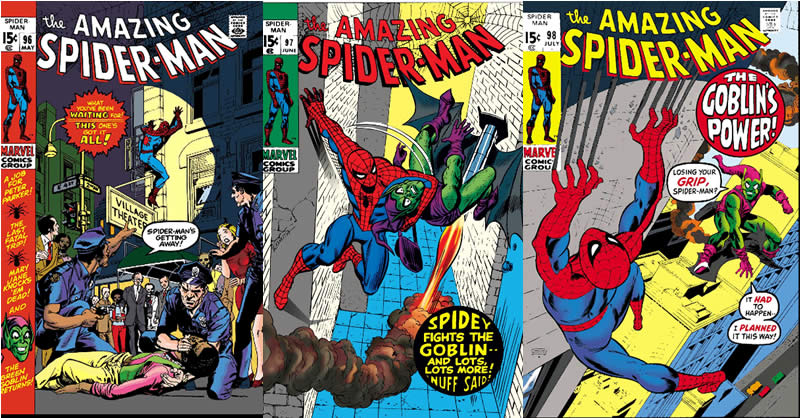
Despite having a letter from the government asking to do this and the fact that drugs had been a part of at least two previous code-approved, the CCA told Stan he could not publish them. So Stan got permission from the publisher (Goodman) and ran the issues without the code.
The CCA probably wouldn’t have turned Lee down if Leonard Darvin, the CCA Administrator at the time had been there to make the call. Unfortunately he was sick. In his place was John Goldwater from Archie comics. Goldwater was adamant about not running these issues.
But why are you reading my words when you can hear The Man talk about it?
The issues are good issues. They have MJ screwing over Harry …
Harry going over the edge…
Spidey beating up on the Green Goblin …
And this stoned guy walking off a building…
But perhaps the most powerful drug-related part of the story was that Harry, the rich white kid, also has problems with drugs. This point is reinforced by Robbie Robertson running a Bugle story on Harry’s drug problem and emphasizing that this is EVERYONE’S PROBLEM. That and the fact that it is Peter Parker that tackles the drug dealers, not Spidey.
Now for the Distinguished Competition’s reaction –
Carmin Infantino (thanks to Stella I can only hear the way she intentionally over-pronounces his name now) had this to say in an interview:
“No, I wasn’t involved in that at all. We just went right through it. What happened was we just ignored it after a while. Y’know when it broke? When Stan and I both did the drug stories, you remember that? Stan did it first. Only thing was different was I got some guy in there to make sure it was wholesome first. Stan did it crazy, having some guy jumping off the roof. It was haphazard. He got yelled at for it. I was a little more careful.”
Now take that and compare it to this interview excerpt with Neal Adams:
 “So we’re going into this overpopulation thing with this Green Lantern/Green Arrow thing and I think, ‘We’ve got to do something on drug addiction,’ but of course it’s against the Comic Code, so I went home and I did that first cover. You know, with Speedy? … I penciled it and I inked it and I put the lettering in and I brought it in and I gave it to Julie Schwartz and his hand grabbed it very briefly and then he dropped it on the desk as if it were on fire. He said, ‘We can’t do this.’ I said, ‘Well, we ought to.’ He said, ‘You know we can’t do this. It’s against everything.’ I said, ‘Well, this is where we’re going. This is what we ought to be doing.’ So he said, ‘You’re out of your mind. Once again, you’re being a pain in the ass.’ So I took it into Carmine. Carmine didn’t know what to make of it. I took it into the Kinney people, who were now running DC Comics and were sort of used to this and of course they dropped it like a hot potato. I said, ‘You know guys this is where we ought to be going with this.’ ‘Oh, no, Neal, please, just go and work. Leave us alone. You can’t do this.’ And of course Julie had a twinkle in his eye, but still he knew it was bullshit, it wasn’t going to happen. He said, ‘Why did you finish the cover?’ I said, ‘Well, because it’s going to get printed.’”
“So we’re going into this overpopulation thing with this Green Lantern/Green Arrow thing and I think, ‘We’ve got to do something on drug addiction,’ but of course it’s against the Comic Code, so I went home and I did that first cover. You know, with Speedy? … I penciled it and I inked it and I put the lettering in and I brought it in and I gave it to Julie Schwartz and his hand grabbed it very briefly and then he dropped it on the desk as if it were on fire. He said, ‘We can’t do this.’ I said, ‘Well, we ought to.’ He said, ‘You know we can’t do this. It’s against everything.’ I said, ‘Well, this is where we’re going. This is what we ought to be doing.’ So he said, ‘You’re out of your mind. Once again, you’re being a pain in the ass.’ So I took it into Carmine. Carmine didn’t know what to make of it. I took it into the Kinney people, who were now running DC Comics and were sort of used to this and of course they dropped it like a hot potato. I said, ‘You know guys this is where we ought to be going with this.’ ‘Oh, no, Neal, please, just go and work. Leave us alone. You can’t do this.’ And of course Julie had a twinkle in his eye, but still he knew it was bullshit, it wasn’t going to happen. He said, ‘Why did you finish the cover?’ I said, ‘Well, because it’s going to get printed.’”
He goes on with “Anyway, I make a visit over to Marvel Comics a week or so later and somebody comes over to me, probably Roy or somebody, I don’t know and says, ‘You know what Stan’s doing?’ I said, ‘What?’ He says, ‘He had this guy, this drug addict popping pills and he like walks off a roof.’ I said, ‘Stan had a guy popping pills and he walks off a roof? That’s kind of a unique situation. I don’t exactly know where you’re going to find that, you know I don’t know who’s going to be walking off a roof.’ ‘Well, you know Stan read some kind of article about a guy who went off a roof … So we did it and we sent it over to the Comics Code and the Comics Code rejected it, they said he has to change it.’ So I said, ‘Well, what’s Stan gonna do?’ ‘He’s not gonna change it.’ ‘You’re kidding.’ He says, ‘No. Not gonna change it. We’re just gonna send it out, it’s ready to go out. We’re sending it out. It’s going to be on the stands next week. Week after next.’ ‘Really? No shit. What about the Comics Code seal?’ ‘Not gonna put the Comics Code seal on it.’ ‘Really?’”
After it printed, he went back to his friend at Marvel. “’What happened?’ He said, ‘… Nobody even noticed that the seal wasn’t on there.’ ‘No shit. Nobody even noticed?’ … So I go back to DC, you know, and now that word had gotten out, oh shit. Now try to imagine DC, they’ve got this cover, right? Could have scooped Stan with something real and solid. They screwed up. … He won the day for us. Incredible. Stan, thank you. How do you say thank you? Thank you, Stan, for having a guy popping pills and walking off a roof. Excelsior.”
 The comics got excellent reviews from the press, most notably a Scholastic NewsTime article titled “Comics: Getting the ‘Dope’ on Drugs” (which is impossible to find a copy of) published March 22, 1971, and, the one most frequently mentioned in articles about Marvel’s code defiance, The New York Times article by Saul Braun titled “Shazam! Here Comes Captain Relevant” (which is nigh-impossible to find, but not for us intrepid Crawlspace writers! I did get my hands on it and may be willing to share the PDF of it with you if you ask nicely). This was published May 2, 1971 and is the one that Stan referenced in the above video. It is a very long article is mostly about comics being more than just banal kid stories and dealing with all sorts of socially relevant issues. The small part of the article that actually mentions the drug issues is this:
The comics got excellent reviews from the press, most notably a Scholastic NewsTime article titled “Comics: Getting the ‘Dope’ on Drugs” (which is impossible to find a copy of) published March 22, 1971, and, the one most frequently mentioned in articles about Marvel’s code defiance, The New York Times article by Saul Braun titled “Shazam! Here Comes Captain Relevant” (which is nigh-impossible to find, but not for us intrepid Crawlspace writers! I did get my hands on it and may be willing to share the PDF of it with you if you ask nicely). This was published May 2, 1971 and is the one that Stan referenced in the above video. It is a very long article is mostly about comics being more than just banal kid stories and dealing with all sorts of socially relevant issues. The small part of the article that actually mentions the drug issues is this:
“Recently there were some ruffled feathers in the industry when Marvel issued a comic book without the Authority seal, which was denied because the subject of drugs was alluded to in one story that showed a stoned black kid tottering on a rooftop. Goldwater felt that hinted a bit of sensationalism and Infantino believes the subject calls for a more thorough and responsible treatment. Lee scoffs. Black kids getting stoned isn’t exactly a biannual occurrence, he suggests. Goodman calls the fuss a tempest in a teapot. Goldwater, at any rate, is not inclined to be harsh.
“’Goodman came before the publishers and promised not to do it again. So we’re satisfied. Anybody with 15 solid years of high standards of publishing comic books with the seal is entitled to one mistake.’
Subsequently the publishers decided to give themselves permission to deal with the subject. ‘Narcotics addiction,’ says the new guideline, ‘shall not be presented except as a vicious habit.’”
Curiously, Stan Lee is later quoted in Creem magazine (a sort of Rolling Stones type mag) as saying (in reference to the drug arc) “You know, I was against the use of drugs in that story. I wasn’t at all sure that this was the proper way to treat the story, but Gerry (Conway) managed to convince me that is should be included. It was just a subplot anyway.” It is the only time that Conway is mentioned having anything to do with this whole thing. You can read the whole article here.
On a side note, Joe Quesada’s father heard about the anti-drug issues and thought it would be good for his son to read, thus putting Quesada on to comics for the rest of his life. Your view of OMD will be the litmus test of whether or not that is a good thing.
So the big question is, did it work? Well Stan said when asked, “…at that time many people did in fact tell me that the story made them rethink their use of drugs.” While it is hard to find statistics from the 1960s that can be compared to the 1970s, I did find drug arrest records starting in 1971, the year these issues came out. In 1971, total drug arrests were 500,000. In 1973, it was over 600,000. So while Spidey has defeated many great villains, he came up a bit short on his brief war with drugs.
Baron, Mike. “..And Now Spider-Man and the Marvel Comics Group!” Creem Apr. 1973: 37+. Digital File.
Braun, Saul. “Shazam! Here Come Captain Relevant.” New York Times 2 May 1971: 32+. PDF.
Coville, James. “Interview with Carmine Infantino.” Coville’s Clubhouse. N.p. 2007. Web. 27 Oct. 2015.
“Comics Code Authority.” Wikipedia. Wikimedia. 28 Sept. 2015. Web. 26 Oct. 2015.
Cronin, Brian. “Comic Book Legends Revealed #452.” Comic Book Resources. CBR, 3 Jan. 2014. Web. 31 Oct. 2015.
David, Peter A., and Robert Greenberger. The Spider-Man Vault. Philadelphia: Running Press, 2010.
Drucker, Aaron. “Spider-Man: MENACE!!! Stan Lee, Censorship, and the 100 Issue Revolution.” Web-Spinning Heroics: Critical Essays on the History and Meaning of Spider-Man. Ed. Robert Moses Peaslee and Robert G. Weiner. Jefferson: McFarland, 2012. Google Books.
“’Good Shall Triumph over Evil’: The Comic Book Code of 1954.” History Matters. N.p., N.d. Web. 30 Oct. 2015.
Harrison, Lana D., Michael Backenheimer and James A. Inciardi. “The Nature and Extent of Marijuana Use in the United States.” CEDRO. N.p. 9 Feb. 2010. Web. 28 Oct. 2015.
Saffel, Steve. Spider-Man the Icon. London: Titan, 2007. Print.
Sergi, Joe. “Tales from the Code: Spidey Fights Drugs and the Comics Code Authority.” CBLDF. N.p., 18 July 2012. Web. 31 Oct. 2015.
Shooter, Jim. “Sex and Drugs.” Jim Shooter. Blogger. 21 Dec. 2011. Web. 26 Oct. 2015.
The Silver Age Sage. N.p. 2007. Web. 27 Oct. 2015.
Images:
All images from ASM #96, 97, and 98 are scans from Marvel Unimited
ASM #96 Cover
Seduction of the Innocent
Action Comics #378 Cover
Green Lantern #85 Cover
New York Times Article
Code Seal
Batman and Robin
Credible Hulk

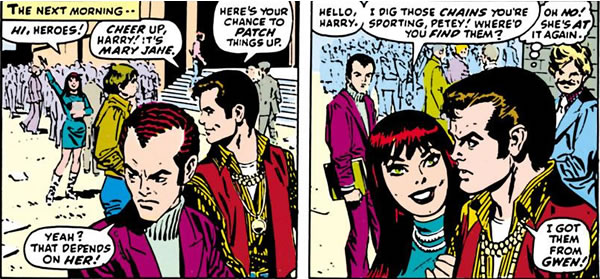
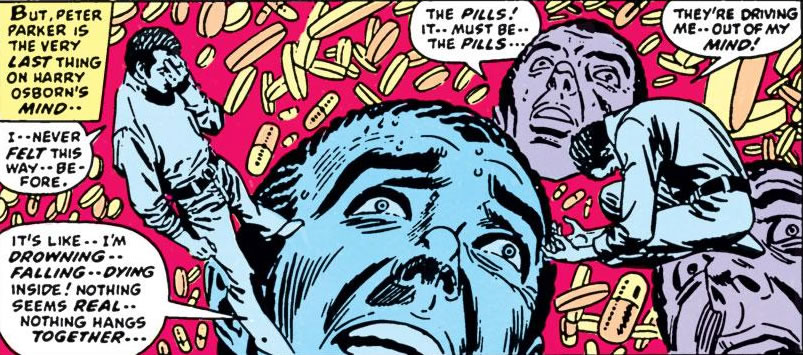
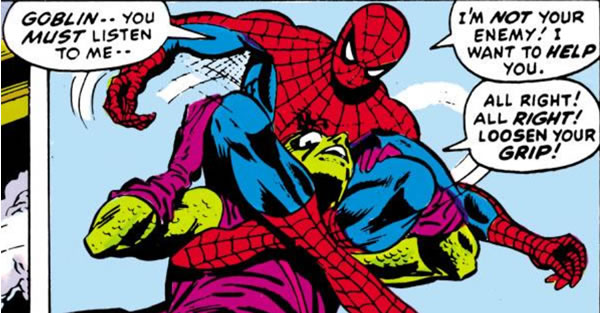
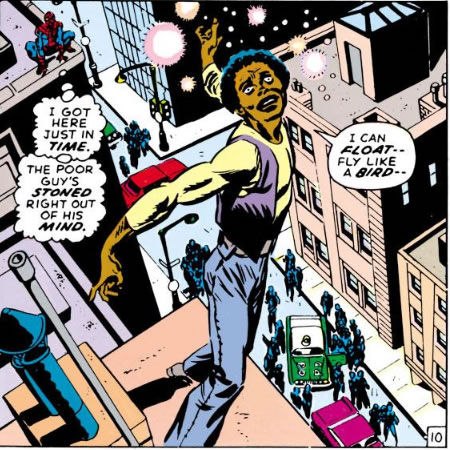
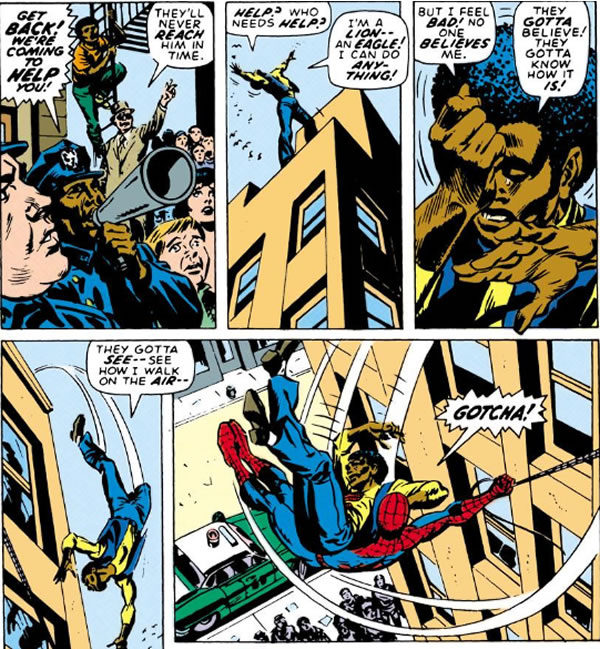

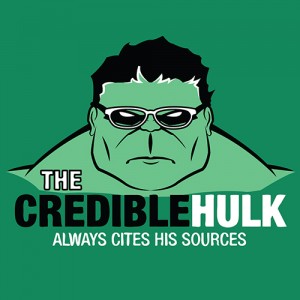
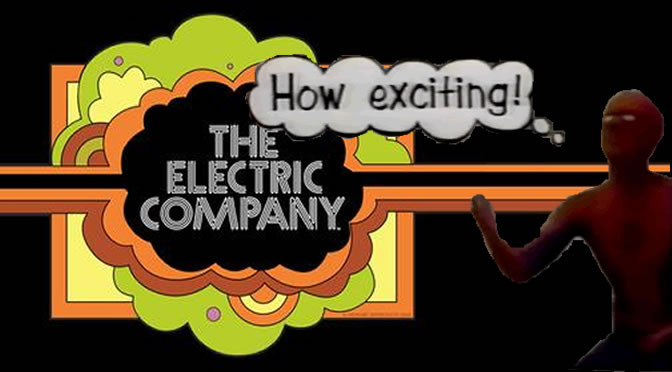
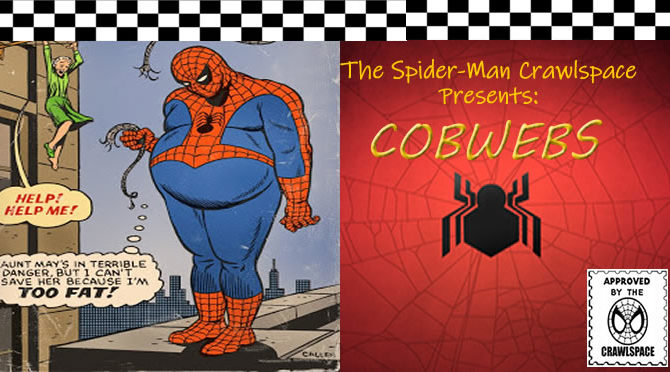
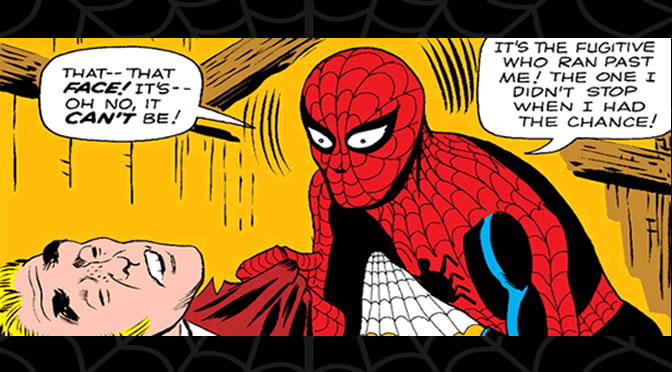





@#11 – I could not agree more. This is probably not the forum to address drug use in the entertainment world. I just wish people didn’t treat drugs as something we should use as recreation. I will just say that so many lives would have been so different if they had never taken that first drink or puff. And now back to all things Spidey…
@#8 – Both Stan Lee AND Peter David writes this? Take my money Marvel! I’m going to have to order that. I saw on the “Customers Who Bought This Item Also Bought” at least two other Stan Lee autobiographies. You know you’re IT when you can write three different books about your own life.
@#10 – That would make sense if this was indeed his first introduction to comic books. We tend to associate the character with our first encounter with him. Me? I grew up on Electric Company so I keep expecting Spidey not to be able to talk. https://www.youtube.com/watch?v=0dNXUNYzjQY
@7 – Thanks for the kind words. About your assessment on drugs and their portrayal, I agree. I know people have different viewpoints on various drugs and the impact it has on people, but I’ve watched a family member in his struggle and the lows it brought him He’ll have to fight that addiction for the rest of his life, no matter how long he stays sober. I think the portrayal in the media is two fold: 1. many people don’t think that recreational use of drugs is harmful. Personally, I’ve watched too many of my students change under the influence of marijuana to see it as harmless. I know many will disagree with that, maybe even many who read this post. That’s their prerogative, I just can’t ignore what I’ve seen. 2. Many people tend to respond to serious topics with jokes in a way to deal with a bad situation. I know I tend to jump to the joke as a dealing mechanism.
Wish I owned those issues. I only have reprints of them.
I believe I read an interesting view once which speculated that it was perhaps MJ’s portrayal in the Drug Trilogy, and perhaps Gwen’s too, that influenced Quesada’s views of the characters. Remember in OMD he wanted to bring Gwen back.
@ #5 Those two separate beds are mighty close to each other! 😀
@ #7 Check out the amazon page –
http://www.amazon.com/Amazing-Fantastic-Incredible-Marvelous-Memoir/dp/1501107720/ref=sr_1_1?s=books&ie=UTF8&qid=1446646629&sr=1-1&keywords=stan+lee
Fantastic article. I am happy to say that I own all 3 of these Spidey issues. I agree that it is unlikely that anyone ever changed their life because they read this arc. It is sad that comics and other entertainment media make light of drug use. This is true now and was true in the 1970’s too. Drugs and alcohol abuse have destroyed so many lives. I am probably naive but I don’t understand why drug use is so passé in media. Why not use the platform to illustrate the evil of drugs and alcohol instead of treating it as the punch line to a joke. Anyone who has had a friend or relative lost to that world knows that it is not funny.
@ #4 – Did it mention anything I left out? I’m not familiar with his autobiography. I’ll have to look for it.
@ #5 – You’re right! Dang! I’m as guilty as Dr. Wertham for jumping to conclusions. I’m thoroughly chagrinned. 🙂
What’s funny is, if you look closely at that Batman panel, Bruce and Dick are in two separate beds.
Interestingly enough, I just read Stan’s GN autobiography and
he tells the reader a lot about that situation.
@#1 – That video pretty much sums up the moral of these three issues!
@#2 – Thanks. That _New York Times_ was difficult to get my hands on. It’s frequently referred to as a great write up, but I think that is because Stan Lee referred to it that way. I’m betting most people haven’t read it. The drug stuff is buried pretty deep in it. The other stuff is just spread around. I found some here and some there, but never all in the same place.
I don’t think anyone would make a life changing choice regarding drugs based on a comic book, but it did increase the readership as parents thought it would be a good influence to their kids. Great article as always and thanks for the sources.
https://www.youtube.com/watch?v=aGFNGH9jHyM